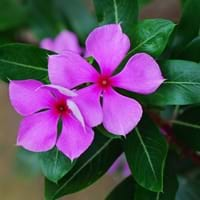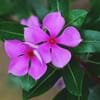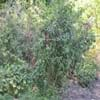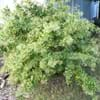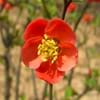Life Span
Perennial
Perennial
Type
Tender Perennial
Trees
Origin
Madagascar
Asia, Europe, North America
Types
Purple vinca, Vinca, cherry red, strawberry color
Black Ash, Blue Ash, California Ash, Carolina Ash, European Ash
Habitat
Subtropical climates, Tropical regions
Forest edges, Hillside, Woods
USDA Hardiness Zone
9-15
3-9
Sunset Zone
A1, A2, A3, H1, H2, 1a, 1b, 2a, 2b, 3a, 3b, 4, 5, 6, 7, 8, 9, 10, 11, 12, 13, 14, 15, 16, 17, 18, 19, 20, 21, 22, 23, 24
9, 12, 13, 14, 15, 16, 17, 18, 19, 20, 21, 22, 23, 24
Habit
Clump-Forming
Oval or Rounded
Flower Color
Pink, Magenta, Rose
White
Flower Color Modifier
Bicolor
Not Available
Fruit Color
Not Available
Not Available
Leaf Color in Spring
Dark Green
Dark Green
Leaf Color in Summer
Dark Green
Dark Green
Leaf Color in Fall
Dark Green
Dark Green
Leaf Color in Winter
Dark Green
Dark Green
Plant Season
Spring, Summer, Fall, Winter
All year
Sunlight
Full Sun, Partial Sun
Full Sun, Part sun
Type of Soil
Loam, Sand
Loamy, Sandy
The pH of Soil
Neutral, Alkaline
Acidic
Soil Drainage
Well drained
Well drained
Bloom Time
Indeterminate
Late Spring, Spring
Tolerances
Pollution, Drought, Salt
Drought, Pollution, Soil Compaction
Where to Plant?
Container, Ground, Pot
Ground
How to Plant?
Seedlings, Stem Planting, Transplanting
Grafting, Seedlings, Stem Planting, Transplanting
Plant Maintenance
Medium
Medium
Watering Requirements
Keep ground moist, Needs 2-3 times watering per week, Requires watering in the growing season, Water Deeply
Does not require lot of watering, Medium, Prefer drip-irrigation instead of Over-head watering
In Summer
Lots of watering
Lots of watering
In Spring
Moderate
Moderate
In Winter
Average Water
Average Water
Soil pH
Neutral, Alkaline
Acidic
Soil Type
Loam, Sand
Loamy, Sandy
Soil Drainage Capacity
Well drained
Well drained
Sun Exposure
Full Sun, Partial Sun
Full Sun, Part sun
Pruning
Prune ocassionally
Prune in winter, Prune prior to new growth
Fertilizers
All-Purpose Liquid Fertilizer
All-Purpose Liquid Fertilizer
Pests and Diseases
Botrytis Blight, Canker, Crown rot, Pythium rot, Root rot
Bark splits, Crown gall, Epicormic Sprouting, Woodpecker feeding
Plant Tolerance
Drought
Drought
Flower Petal Number
Single
Single
Foliage Texture
Medium
Medium
Foliage Sheen
Glossy
Glossy
Invasive
Sometimes
Sometimes
Attracts
Butterflies
Birds
Allergy
Intestinal gas, Nausea, Vomiting
Not Available
Aesthetic Uses
Beautification, Showy Purposes
Not Available
Beauty Benefits
Not Available
Not Available
Environmental Uses
Air purification
Air purification
Medicinal Uses
Chest pain, High blood pressure, Inflammation, Sore throat, Tooth ache, Wounds
Fever, Liver problems
Part of Plant Used
Whole plant
Leaves, Stem
Other Uses
Decoration Purposes, Showy Purposes, Used as Ornamental plant
Used as Ornamental plant
Used As Indoor Plant
Yes
No
Used As Outdoor Plant
Yes
Yes
Garden Design
Bedding Plant, Container, Hanging Basket, Mixed Border, Tropical
Shady Tree, Showy Tree
Botanical Name
CATHARANTHUS roseus
Fraxinus
Common Name
Madagascar Periwinkle, Periwinkle, Vinca
Ash Tree
In Greek
Vinca
δέντρο Ash
In Portuguese
Vinca
Freixo
Phylum
Magnoliophyta
Anthophyta
Class
Magnoliopsida
Magnoliopsida
Order
Gentianales
Lamiales
Family
Apocynaceae
Oleaceae
Genus
Catharanthus
Fraxinus
Clade
Angiosperms, Asterids, Eudicots
Angiosperms, Asterids, Eudicots
Tribe
Not Available
Oleeae
Subfamily
Not Available
Not Available
Number of Species
Not Available
Importance of Vinca and Ash Tree
Want to have the most appropriate plant for your garden? You might want to know the importance of Vinca and Ash Tree. Basically, these two plants vary in many aspects. Compare Vinca and Ash Tree as they differ in many characteristics such as their life, care, benefits, facts, etc. Every gardener must at least have the slightest clue about the plants he wants to plant in his garden. Compare their benefits, which differ in many ways like facts and uses. The medicinal use of Vinca is Chest pain, High blood pressure, Inflammation, Sore throat, Tooth ache and Wounds whereas of Ash Tree is Fever and Liver problems. Vinca has beauty benefits as follows: Not Available while Ash Tree has beauty benefits as follows: Not Available.
Compare Facts of Vinca vs Ash Tree
How to choose the best garden plant for your garden depending upon its facts? Here garden plant comparison will help you to solve this query. Compare the facts of Vinca vs Ash Tree and know which one to choose. As garden plants have benefits and other uses, allergy is also a major drawback of plants for some people. Allergic reactions of Vinca are Intestinal gas, Nausea and Vomiting whereas of Ash Tree have Not Available respectively. Having a fruit bearing plant in your garden can be a plus point of your garden. Vinca has no showy fruits and Ash Tree has no showy fruits. Also Vinca is not flowering and Ash Tree is flowering. You can compare Vinca and Ash Tree facts and facts of other plants too.
